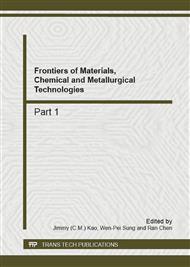p.37
p.41
p.46
p.50
p.54
p.58
p.64
p.68
p.73
Concentration of DHA and EPA from Marine Fish Oil by Urea Complexation
Abstract:
A simple and inexpensive procedure involving ethanolysis and urea complexation was developed to concentrate docosahexaenoic acid (DHA) and eicosapentaenoic acid (EPA) from marine fish oil in the form of their ethyl esters. The urea complexation process parameters including urea-to-fish oil ratio, the amount of ethanol and reaction temperature were investigated in single factor experiments. The results showed that the optimal process parameters for urea complexation were as follows: the ratio of urea-to-fish oil of 0.75:1, the ratio of ethanol-to-urea of 2:1, reaction temperature of 65 °C for 30 min. Under these conditions, the total fraction of DHA and EPA in concentrates was increased to 60.6%, in which the content of DHA and EPA was 24.2% and 36.4%, respectively. Combination of ethanolysis and urea complexation is a promising method to obtain concentrated n-3 polyunsaturated fatty acids (PUFA) from marine fish oil.
Info:
Periodical:
Pages:
54-57
Citation:
Online since:
October 2012
Authors:
Keywords:
Price:
Сopyright:
© 2012 Trans Tech Publications Ltd. All Rights Reserved
Share:
Citation:


